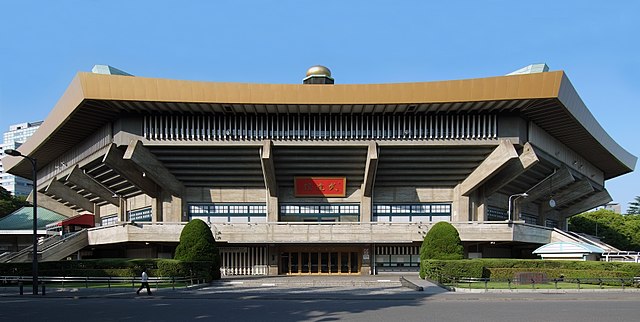Top Qs
Timeline
Chat
Perspective
Indonesia 6
Indonesian jazz fusion band From Wikipedia, the free encyclopedia
Remove ads
Indonesia 6 was a jazz fusion band from Indonesia, active primarily in the late 1980s. The group was notable for its contributions to the Indonesian music scene and for being an early platform for musician Yovie Widianto and as precursor to the formation of the well-known band Kahitna. The band originated from earlier formations known as Coops Rhythm Section and Rooster, which eventually evolved into Indonesia 6. The lineup included Yovie Widianto on keyboards, Iwan Wiradz, Desi Arnaz, Hentriesa, Bubi Iradiadi, and Yani Danuwijaya.[1]
Remove ads
Formation
Summarize
Perspective

In 1987, Indonesia 6 gained national recognition by participating in the World Band Explosion, also known as the Yamaha Light Music Contest, held at Budokan Hall in Tokyo. Indonesia 6, a jazz-fusion band formed in 1984, gained international recognition after their performance at the International Light Music Contest 1987 in Tokyo, where they won Best Keyboard Player and Best Bassist awards.[2] Their performance of "All the Things You Are"—rearranged into a samba rhythm with Latin influences—stood out for its complex improvisations and fusion elements reminiscent of bands like Casiopea, Spyro Gyra, and Level 42. The band originally performed under the name Kahitna, with all members being students of Elfa Music Studio in Bandung. The group later adopted the name Indonesia 6 to align with their participation in the Light Music Contest, referencing the band's six-member lineup. The members included:[1]
- Hentriesa Yulmedia (drums)
- Yani Danuwijaya (keyboards; Best Keyboard Player Award)
- Desi Arnaz Lahat (bass; Best Bassist Award)
- Iwan Wiradz (percussion)
- Bubi Iradiadi (keyboards)
- Yovie Widianto (keyboards)
The band represented Indonesia and Asia alongside participants from 22 groups across 11 countries, including Japan. 6,500 bands from Japan and 5,500 bands from other countries had originally competed for the opportunity to perform in Tokyo. The group's music was primarily influenced by Latin jazz, but they incorporated Indonesian ethnic elements for international appeal. Elfa Secioria, their mentor and musical director, emphasized the band's fusion style that blended traditional Indonesian sounds with Latin percussion and modern jazz. Yani Danuwijaya, the youngest member at 15 years old, had already gained international recognition through the Junior Original Concert (JOC) in Tokyo and Osaka and had performed for UNICEF and at the United Nations Headquarters in New York. Despite his classical training, Yani transitioned into jazz with guidance from Tamam Hussein, focusing on developing his jazz improvisation skills.[3][1]
Remove ads
Discography
Summarize
Perspective
The band's self-titled debut studio album was released in 1989 under Team Records, shortly after their success in Tokyo, showcasing their Latin jazz style with a strong fusion influence and tracks like "Fatamorgana", which drew direct inspiration from Casiopea. The album featured collaborations with prominent artists such as Yana Julio, Harvey Malaihollo, Ferina Widodo, Lita Zen and Malaysian singer Fairuz Hussein.[4]
Track listing
Remove ads
Legacy
While Indonesia 6 showed immense promise, the band members were still students with academic aspirations beyond music. Yani planned to continue his education, while Desi aimed for a degree in economics. Hentriesa, however, declared his full commitment to music. Thus led to the disbandment of Indonesia 6 after their debut album.[1] The second album of Indonesia 6 was ultimately never released due to unspecified reasons. One of the songs from the unreleased album, titled "Pinocchio", was later repurposed and released in 1998 as part of Kahitna's album Sampai Nanti.[3] Whilst was short-lived, the members continued to influence the Indonesian music industry. Notably, Yovie Widianto went on to form Kahitna in 1986 as a successor of the group, achieving significant success in the Indonesian pop and jazz scenes.[1]
In 2017, to commemorate the 30th anniversary of their performance in Tokyo, Indonesia 6 reunited for a nostalgic concert at the Jakarta Hard Rock Cafe. The event celebrated their past achievements and contributions to Indonesian music.[5]
Reference
External links
Wikiwand - on
Seamless Wikipedia browsing. On steroids.
Remove ads


